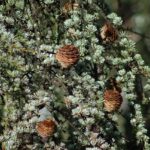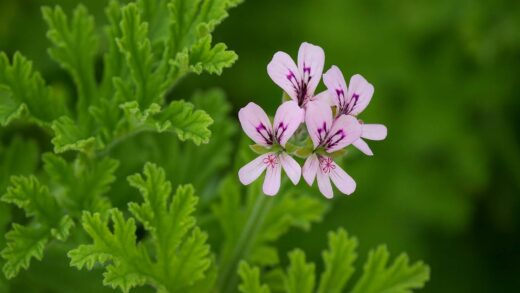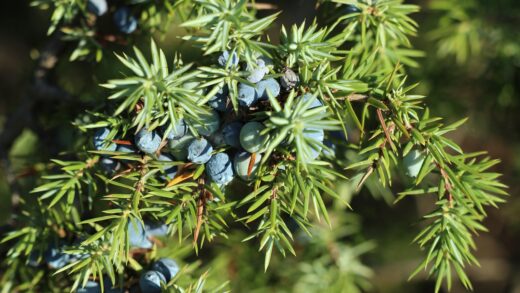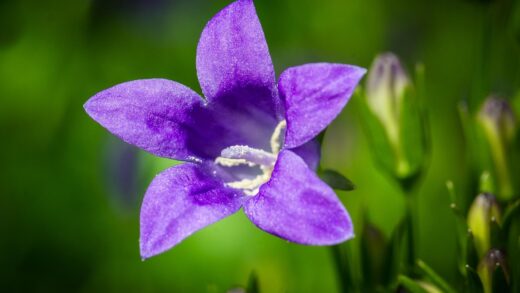Globe amaranth is a naturally well-behaved plant in the garden, typically growing into a neat, mounded form without requiring extensive pruning or shaping. Its maintenance needs are minimal, which is a significant part of its appeal to many gardeners. However, a few simple and strategic cuts at the right time can enhance its appearance, encourage a fuller and more robust habit, and even stimulate a more prolific production of its charming, long-lasting flowers. The primary pruning activities for this plant are pinching back young seedlings to promote branching and deadheading spent blooms to maintain a tidy look and redirect the plant’s energy. These straightforward techniques are easy to master and can make a noticeable difference in the overall performance of the plant.
The most impactful pruning you can perform on globe amaranth happens early in its life. This technique, known as “pinching” or “pinching back,” involves the removal of the central growing tip of a young plant. While it may seem counterintuitive to remove part of a small seedling, this single action encourages the plant to develop lateral or side shoots from the leaf nodes below the cut. This results in a plant that is much bushier, more compact, and ultimately produces a far greater number of flowering stems than an unpinched plant would.
Throughout the blooming season, the main form of maintenance is deadheading, which is the practice of removing flowers that are past their prime. The papery bracts of globe amaranth hold their color for an exceptionally long time, so they rarely look messy. However, removing the older flower heads prevents the plant from expending its energy on producing seeds. By cutting off this energy sink, you signal to the plant that it should continue to produce new buds and flowers, often extending the blooming period and ensuring a more vibrant display late into the season.
Beyond these two primary techniques, globe amaranth requires very little in the way of cutting back. It is not a plant that becomes overly large, woody, or invasive during its single growing season. If a stem happens to get broken by wind, rain, or accidental damage, it can simply be trimmed back to the nearest set of healthy leaves or to a main branching point. This simple grooming keeps the plant looking its best and channels its resources into productive, healthy growth, ensuring it remains a tidy and colorful contributor to the garden until the first frost.
Pinching back for a fuller plant
Pinching is a simple yet highly effective pruning technique that is best performed when globe amaranth plants are young and actively growing. The ideal time to do this is when the seedlings have reached a height of about six to eight inches and have several sets of true leaves. At this stage, the plant is still focused on vegetative growth and will respond vigorously to the pruning by pushing out new side branches. Pinching a plant that is too small may stunt its growth, while waiting too long until it has started to form flower buds is less effective.
More articles on this topic
The process of pinching is very straightforward. Using your thumb and forefinger or a clean, sharp pair of small scissors, simply snip off the top one to two inches of the main, central stem. You should make the cut just above a set of leaves or a leaf node. From the axils of these leaves—the point where the leaf stalk joins the main stem—new lateral stems will begin to grow. This single pinch can effectively double the number of main branches on the plant.
The result of this action is a dramatic change in the plant’s growth habit. Instead of growing tall and somewhat narrow with a single dominant stem, the pinched plant will become significantly bushier, shorter, and more rounded. This dense, mounded form is often more aesthetically pleasing in garden beds and containers. More importantly, because each of these new lateral branches will eventually terminate in a flower, you are effectively multiplying the number of blooms the plant will produce, leading to a much more impressive floral display.
While pinching does slightly delay the appearance of the very first flower, the enormous increase in the total number of blooms produced over the course of the season makes it a worthwhile trade-off. This technique is particularly beneficial for the taller varieties of globe amaranth, as it helps to create a sturdier plant that is less likely to become floppy. For gardeners seeking the most impactful and floriferous display, taking the time to pinch back young plants is one of the easiest and most rewarding investments in their seasonal care.
The practice of deadheading
Deadheading is the ongoing process of removing spent or faded flowers from a plant. For globe amaranth, this is less about necessity and more about refinement and optimization. The flowers, which are technically colorful bracts, are incredibly persistent and can look attractive on the plant for a very long time, even after they have finished their biological function. However, once a flower has been pollinated and begins the process of setting seed, it draws a significant amount of energy from the plant that could otherwise be used to create new flowers.
More articles on this topic
By regularly removing these aging flower heads, you interrupt the seed production cycle. This sends a signal to the plant to redirect its energy back into forming new buds and blooms in a continued effort to reproduce. The result is a more continuous and prolific flowering performance throughout the entire season, from early summer until the first frost. While an un-deadheaded globe amaranth will still flower well, a regularly deadheaded one will often produce an even more impressive and sustained display.
The process of deadheading is simple. Identify a flower head that is starting to look faded, brown, or less dense than the fresh new blooms. Follow its stem down to the first set of healthy leaves or to a point where a new side shoot is emerging. Using clean scissors or pruning shears, make a clean cut at this point. This not only removes the spent flower but also encourages the new side shoot to develop more quickly, often leading to another flower in its place.
Making deadheading a regular part of your gardening routine, perhaps once a week or every two weeks, is the best approach. A few minutes spent snipping off the older blooms while you are enjoying your garden is all it takes to keep the plants looking tidy and performing at their peak. This simple act of grooming is a relaxing task that pays significant dividends in the form of a more vibrant and longer-lasting floral show from your globe amaranth plants.
Pruning for cut flowers
Globe amaranth is one of the most popular and desirable flowers for cutting gardens, prized for its unique texture and incredible vase life, both fresh and dried. The process of harvesting the flowers for arrangements is, in itself, a beneficial form of pruning for the plant. Regularly cutting the flowers encourages the plant to produce more stems and blooms, in much the same way that deadheading does. This means that the more flowers you cut and enjoy indoors, the more the plant is likely to produce outdoors.
When cutting globe amaranth for fresh arrangements, it is best to harvest them in the morning after the dew has dried but before the heat of the day sets in. This ensures the stems are well-hydrated. Choose flowers that are fully open and have reached their full, vibrant color. Use a sharp, clean pair of scissors or a knife and cut the stem to your desired length, making sure to cut just above a leaf node to encourage new growth from that point.
Immediately after cutting, strip the lower leaves from the stems—any leaves that will be below the waterline in the vase. Submerging leaves in water can lead to bacterial growth, which will foul the water and significantly shorten the vase life of the flowers. Place the freshly cut stems into a clean vase filled with fresh water. Freshly cut globe amaranth can last for a week or more in a vase, and their papery texture means they often dry perfectly right in the arrangement.
If your primary goal is to grow globe amaranth for dried flowers, the harvesting process is similar. Cut the stems when the flower heads are at their peak color and form. Gather the stems into small bunches and hang them upside down in a dark, warm, and well-ventilated location. The darkness helps to preserve the color of the flowers. After two to three weeks, the stems and flowers should be completely dry and ready for use in everlasting arrangements, wreaths, and other crafts, where their color will persist for many months or even years.
End-of-season cutting back
As an annual plant in most climates, globe amaranth completes its life cycle in a single season, and there is no pruning or cutting back that will help it survive the winter. The plant’s demise is brought on by the first hard frost, which will kill the foliage, stems, and roots. Therefore, the end-of-season “pruning” is actually the complete removal of the plant from the garden. This is an essential step in good garden hygiene and prepares the bed for the following spring.
Once the frost has turned the plants black and they are clearly dead, it is time for cleanup. The plants should be cut down at the base or pulled out entirely, including the root system. Leaving the dead plant material in the garden over the winter can create a habitat for pests to overwinter and can harbor disease spores that could affect next year’s plants. A clean garden bed is a healthier garden bed.
The removed plant matter, as long as it was not seriously affected by any diseases like aster yellows, can be added directly to your compost pile. The stems and leaves will break down over the winter and spring, contributing valuable organic material to your finished compost. This is a great way to recycle the plant’s biomass and return its nutrients to the garden ecosystem.
After the plants have been cleared away, you have a final opportunity to tend to the garden bed itself. You can lightly cultivate the soil to remove any lingering weeds and then top the bed with a layer of compost or shredded leaves. This acts as a protective winter mulch for the soil and begins the process of enriching the ground for whatever you choose to plant there next season. This final cut back and cleanup provides a satisfying conclusion to the life of your globe amaranth and sets the stage for future gardening success.


















